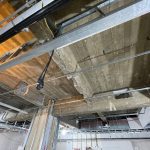I want to highlight the differences between two project design-delivery methods in the Architecture and Construction industries. Design-Bid-Build, and Design-Build are familiar terms for professionals in the industry. What do these teams mean to owners and those pursuing a project?
Both are project delivery methods have their own characteristics and advantages.
Design-Bid-Build (DBB):
This is the traditional approach to Architecture and Construction projects. In this traditional approach, the project is divided into two separate phases: the design phase and the construction phase.
During the design phase, a design team led by Architects, Engineers, and other Professionals create the plans and specifications for the project. This is done through meetings with the Owner-Client team, and following presentations plus iterations of Schematic Design, Design Development, and Construction Document development.
Once the design drawings and specifications are complete, these are packaged and the project is put out to bid in a Request for Proposal process., Contractors submit competitive bids based on the provided plans and specifications. In my experience this is best done concurrently with permit filing and approval, as well as any landlord or board reviews.
Once submitted, vetted, and fully leveled, the Owner side can review each bid – usually this process involves an interview and negotiation process. The owner then selects the contractor with either the lowest bid or the one that best meets their criteria.
After the contractor is selected, construction begins based on the finalized design documents. Hopefully in this time, the permits are in hand and landlord review boards have approved the work.
There’s two crucial differences on the Construction Side as well, with General Contractors versus Construction Managers. I’ll cover the details in a separate article coming soon.
In summary:
- Both construction managers and general contractors play similar roles in the construction procurement and delivery process.
- A construction manager focuses more on the overall coordination and management of the project from within the design phase. A construction manager works closely with the client, architects, engineers, and subcontractors early in a project starting in the schematic design or design development phase. The CM is heavily involved in the pre-construction phase, and offers input on cost estimates, scheduling, and methods to get the project done on time and on budget.
- A general contractor is only responsible for the execution of the construction work from the bid and construction drawings. General contractors bid on projects based on a set of plans and specifications provided by the client or architect-engineer design team, then hire subcontractors to procure materials and to oversee the construction process of a project from start to finish.
Design-Build (DB):
In the design-build approach, the design and construction phases are merged into a single contract with one entity, the design-builder, responsible for both design and construction.
The design-builder typically hires an architect, engineering firms, and full design team to develop the plans and specifications, and then manages the construction process as well with in house subcontractors and Construction Managers.
This method allows for greater collaboration between the design and construction teams through the whole process, potentially leading to faster project delivery and cost savings.
The owner has a single point of contact throughout the project as the Design-Build firm effectively also acts as the Owner’s Representative, simplifying communication and reducing administrative burden.
Key Differences Between Design-Bid-Build and Design-Build
There are three notable differences between these project procurement and delivery methods that can reflect their advantages.
Responsibility
In design-bid-build, the owner has separate contracts with the designer-vendor teams and the contractor. Thus, although the Contractor (whether General Contractor or Construction Manager) will be responsible for subcontractors, it is the Owner’s responsibility to manage the team and project as a whole.
In design-build, there’s only one contract with the design-builder, who is responsible for both design, engineering, procurement and construction. Thus, the Design-Build team is also in charge of managing the project.
Collaboration
Design-build encourages greater collaboration between designers and builders, since they are part of the same team from the outset. In this format some teams create exceptionally high quality albeit expensive work.
On the flip side, you have far fewer options to choose from in terms of design and quality – and less flexibility in pricing. Once you’ve picked your horse in Design-Build, you’re stuck on that horse thru the very end of the project.
In contrast, design-bid-build can lead to less collaboration when the contractor is brought in as General Contractor after the design is complete. When brought into the design phases as a Construction Manager, there are still limitations on the contractor’s input into the construction feasibility process.
On the other hand, in Design-Bid-Build you as owner have far more negotiating and purchasing power due to the competitive bid process involved with every vendor in every aspect of the team. This is true for the design as well as construction side.
Flexibility
Design-build offers more flexibility for changes during construction, since the designer and builder are part of the same team and can quickly address issues or make modifications.
In design-bid-build, changes and deviations from the Bid or Construction drawings will entail Change Requests, additions to the construction procurement. Assembling these drawings and packages is definitely more cumbersome and expensive to implement once construction has started. Delays may even be caused by long lead times, as well as the time it takes for review and approval of any Change Request.





 Table Of Contents
Table Of Contents

Leave a Reply